As the 20th anniversary year of The Alienist‘s publication draws to a close, I have decided to honor the occasion one final time with a special three part book blog series. Regular visitors to 17th Street will already be aware that I have spent much of 2014 discussing the various works of fiction and non-fiction Caleb Carr cited as inspirations for The Alienist on the 17th Street book blog (see my discussions of The Thin Man by Dashiell Hammett and How The Other Half Lives by Jacob Riis as examples). However, despite having run 17th Street for nearly nine years now, it recently occurred to me that I have never shared any of my personal views about the book that started it all: The Alienist.
In truth, my failure to share my personal views about either of the Alienist books on 17th Street was largely by design. As I see reading as a deeply personal experience, my original goal with 17th Street was simply to provide a comprehensive resource for interested readers that would serve to enhance the reading experience with maps of book locations, timelines of key plot events, character lists, character analyses, and historical information rather than influencing the reading experience with subjective opinion pieces. However, having now spent the past year sharing my personal views on the various works that influenced The Alienist, I think the time has come for me to finally share my subjective—sometimes controversial—opinions about the book itself.
The following series therefore pays homage to a book that touched me more powerfully than any other had done at the time I read it over ten years ago, and that continues to inspire me to this day. Whether you are a first-time reader of The Alienist or are returning for a re-read, I hope you find the following series helpful, and will take the time to look a little more deeply in order to see the book as more than just a gripping psychological thriller or enticing piece of historical fiction; rather, that you will see it as the superbly constructed piece of social commentary that it is—a piece of social commentary that is not just about society of 120 years ago, but about our society, too.
N.b. The following post contains major spoilers for The Alienist. To read a spoiler-free synopsis, please refer to the summary page.
“You can practically hear the clip-clop of horses’ hooves echoing down old Broadway…”
The New York Times opened their 1994 review of The Alienist with the preceding statement, and there is no better way to introduce what is, at the most basic level, a historical thriller of the first order. As I noted in one of my posts replying to the NY Public Library’s discussion of The Alienist in late 2013, Mr. Carr is a historian first and foremost, and it shows in the way he captured not only 1890s New York City and everything that entails, but also the history of psychology and psychiatry, forensic science, and even literature as well.
Speaking as an experimental psychologist with a keen interest in my own field’s history, I can attest that the accuracy and skill with which Mr. Carr incorporated the history of psychology and psychiatry into the text was nothing short of superb. Even though none of the characters had more knowledge than they would have had in 1896, a realistic psychological profile was able to be constructed (quite a feat!) by a psychiatrist, Dr. Laszlo Kreizler, who was in no way anachronistic, as Mr. Carr explained in his 2013 New York Times web chat in answer to a question I asked about the real psychological figures who contributed to Dr. Kreizler’s character and professional opinions:
Laszlo Kreizler was based in part on Dr. [Adolf] Meyer, very definitely, but he was equally based on William James, and the combination is important: Meyer, while he was forward-thinking in most respects, tended to be very medical in his outlook, and very concerned with subjects that medicine could directly address. James, on the other hand, though a doctor, had transcended medicine, and was willing to look toward any solution that might throw light on a particular problem, or that might throw light on life in general. I like to think that Kreizler, for all his seeming rigidity about certain things, was a philosopher as much as he was a medical man, and hence the combination. There were other influences on his character, of course, and he basically sheds light on them in the first big examination scene at 808 Broadway, where the note to Mrs. Santorelli is examined. No influence was too outlandish (as in the case of Krafft-Ebing) or too incompletely formed (as in the case of Freud) for him to consider, whereas both of those men were dismissed out of hand by most of the medical establishment. In short, Kreizler was as much a psychologist as a psychiatrist, and perhaps more his own breed of philosopher above all.
Beyond the history of psychology and psychiatry, the novel also provides an interesting glimpse into the history of forensic science. Thanks to the inclusion of the forward-thinking Detective Sergeants Marcus and Lucius Isaacson, the investigative team is able to employ forensic techniques that were only emerging at the turn of the last century, including dactyloscopy (fingerprint identification), anthropometry, and handwriting analysis. However, in case it seems a little too prescient of the Detective Sergeants to only use techniques that time would establish had sound scientific basis, we also see Marcus try his hand at optography, an intriguing technique that was ultimately doomed to failure. Involving the attempted retrieval of an optogram, an image on the retina of the eye, optography was based on the popular nineteenth century idea that the retina records the last image it sees at death.
This reference to optography, a technique used by Jules Verne as a key plot point in his 1902 novel The Kip Brothers, also hints at another role the Detective Sergeants appear to serve in The Alienist: as a means to allude to the novel’s roots in classic literature. Drawing inspiration from the works of popular mid-nineteenth century sensation novelist Wilkie Collins who frequently utilized multiple narrators to tell a single story, Mr. Carr explained in an interview following the publication of The Alienist‘s sequel, The Angel of Darkness, that his original plan was to have a series of Alienist books, each narrated by a different member of the investigative team. In a subtle reference to these roots, we discover in The Alienist that the Isaacson brothers were inspired to become detectives thanks to their boyhood love of Wilkie Collins’ novels, with Lucius even giving Dr. Kreizler a copy of The Moonstone to read on his trip to Washington D. C.
However, it was Mr. Carr’s ability to capture old New York that readers and critics alike seemed to find most enticing about the novel. I once had a visitor to 17th Street comment that the city of New York is almost another character in the novel, an observation I can’t disagree with. As an outsider to New York, I’ve often felt that you can tell the difference between writers who are born and bred New Yorkers and those who are newcomers or outsiders to the city. There is something in the way native New Yorkers are able to capture their city’s unique and dramatic contrasts—the juxtaposition of extreme wealth and extreme poverty (once upon a time, at any rate), brick and stone edifices abutting large expanses of leafy parkland, icy winters followed by heat wave summers—that outsiders or newcomers to the city can’t seem to replicate; and I, for one, find it obvious that The Alienist and its sequel were written by a born and bred New Yorker.
For my own part, the primary reason I enjoyed the portrayal of old New York in The Alienist is that while we weren’t limited to experiencing one element of New York society, none of those elements—or even the city itself—were romanticized. Over the course of the novel, we see the good and bad in all walks of life as we visit the worst rear tenements and dives of the Lower East Side, walk the forbidding corridors of Bellevue’s Insane Pavilion, join our narrator John Moore as he reads The New York Times in his grandmother’s glass-enclosed nook at the rear of her Washington Square home, listen to Cyrus play the piano in the parlor of Dr. Kreizler’s elegant townhouse on Stuyvesant Square before attending the opera and eating a decadent meal at Delmonico’s, get “introduced to the reptiles” at Theodore Roosevelt’s Lenox Hill residence, and visit the legendary “Black Library” of J. P. Morgan’s stately mansion on Madison Avenue.
The atmospheric descriptions of street scenes that pepper the novel also helped to capture the positives and negatives of the city in such a way that even outsiders to New York, such as myself, are able to imagine what it must be like to experience life in the city in the same way as native New Yorkers; an experience I also enjoyed when I read Mr. Carr’s first attempt at fiction, Casing the Promised Land. However, this accurate portrayal of life in New York at the turn of the last century was not just limited to physical locations. It also extended to the politics and social climate of that particular moment in the city’s history as well, which leads us to the first of the novel’s central themes we will be discussing in the following blog series: corruption.
New York’s Strongest Reason for Being
When the killer in The Alienist leaves the body of one of his victims in Battery Park, our narrator John, the son of an investment banker, can’t help seeing deeper meaning in the killer’s actions.
Whoever our quarry was, and whatever the personal turmoil that was propelling him, he was no longer confining his activities to the less respectable parts of town. He had ventured into this preserve of the wealthy elite and dared to leave a body in Battery Park, within easy sight of the offices of many of the city’s most influential financial elders. Yes, if our man was in fact sane, as Kreizler so passionately believed, then this latest act was not only barbarous but audacious, in that peculiar way that has always produced a mixture of horror and grudging acknowledgement in natives of this city.
The Alienist, Chapter 14
The killer’s audacity is perhaps best appreciated when one considers John’s earlier statement that the “alternately seductive and repellant” activity surrounding the “getting and keeping of money” was, by 1896, “unarguably New York’s strongest reason for being.” This message is driven home in Part III of the novel when we discover that the team had made themselves a “wide variety of powerful enemies” through their investigation, as the famed financier J. P. Morgan, who only one year prior to the events of The Alienist had come to the rescue of the Federal Treasury following the Panic of 1893, explains to Dr. Kreizler:
“You are probably not in a position to know, Doctor,” Morgan answered carefully, “that we are at a crossroads, both in New York and in the country as a whole. The city is changing. Dramatically. Oh, I don’t simply mean the population, with the influx of immigrants. I mean the city itself. Twenty years ago, New York was still primarily a port—the harbor was our chief source of business. Today, with other ports challenging our preeminence, shipping and receiving have been eclipsed by both manufacture and banking. Manufacture, as you know, requires workers, and other, less fortunate, nations in the world have provided them. The leaders of organized labor claim that such workers are treated unfairly here. But fairly or no, they continue to come, because it is better than what they have left behind … We shall not be able to offer such a chance, in future, should our national economic development—which is currently in a state of deep crisis—be retarded by foolish political ideas born in the ghettos of Europe … Any events which can be prostituted to serve the purposes of those ideas must be suppressed.”
The Alienist, Chapter 30
The “foolish political ideas” to which Morgan referred are best captured in the novel by the presence and influence of smooth-talking crime boss Paul Kelly, leader of the Five Points Gang, who went out of his way throughout the course of the novel to stir up unrest in New York’s immigrant population over the police force’s apparent inaction in response to the murders, all of which targeted children from immigrant groups. When Dr. Kreizler asks Kelly why he concerned himself with the matter at all given that the latter neither gained nor lost from the murders, Kelly explains:
“Because it riles me.” For the first time, Kelly’s face went straight. “That’s right, Doctor—it riles me. Those pigs back there get fed all that slop about society by the boys on Fifth Avenue just as soon as they’re off the boat, and what do they do? They knock themselves out trying to eat every bit of it. It’s a sucker bet, a crooked game, whatever you want to call it, and there’s a part of me that wouldn’t mind seeing it go the other way for a while.”
The Alienist, Chapter 28
Although on the surface it might appear that only leaders of industry and their financiers would be concerned about such an immigrant uprising, it quickly becomes apparent in John and Dr. Kreizler’s meeting with J. P. Morgan that the investigative team’s “powerful enemies” extend far further than Wall Street. John comes to the realization towards the end of the meeting that the reason the team appear to have been getting thwarted by rogue priests and ex-cops who have been paying off the parents of victims throughout the course of the investigation could be traced to a simple answer: money and corruption. As John explains to Dr. Kreizler:
“They [the priests] weren’t covering for the murderer. They were never concerned about the murderer. It was the reaction among the immigrants that had them spooked. [Archbishop] Corrigan’s afraid that they’ll get angry enough to listen to Kelly and his socialist friends—angry enough to stop showing up on Sunday and coughing up what little money they have. Basically, the man’s afraid he won’t get to finish his damned cathedral, and all the other little holy projects he’s probably got planned.”
“But what about [Bishop] Potter?” Kreizler asked. “You told me yourself that the Episcopals don’t have many adherents among the immigrants.”
“That’s right,” I said, smiling a bit. “They don’t. But they have something even more profitable, and I’m an ass for not remembering it. Perhaps Mr. Morgan would be willing to tell you”—I turned toward the big walnut desk and found Morgan staring back at me uncomfortably—”who the largest slum landlord in New York is?”
The Alienist, Chapter 30
Finally, the involvement of ex-cops working in collaboration with former Police Chief Thomas Byrnes to disrupt the team’s investigation is a reference to the fall-out following the Lexow Committee’s inquiry into corruption in the city between 1894 and 1895. As described in 17th Street’s Island of Vice book blog earlier this year, the fight against corrupt elements of New York society began in 1892 when the Reverend Charles H. Parkhurst, president of the Society for the Prevention of Crime, shocked his parishioners by accusing the Tammany-dominated New York City police force, district attorney, and even the city’s mayor of “licensing crime.” Over the years that followed, the reform movement in the city gained strength, eventually leading to the election of a Republican reform administration led by Mayor William L. Strong in 1895. In an attempt to break the hold of corrupt officials in the police force, Mayor Strong swore in a new Police Board of Commissioners, of which a young and moralistic Theodore Roosevelt would go on to become President.
The first order of business for the new police commissioners was to remove the corrupt old guard of New York’s police force, starting at the top with Police Chief Thomas Byrnes, before getting to work enforcing laws the police force had been turning a blind eye to for years. However, as John notes within The Alienist, reform in New York City was no easy task.
…degeneracy and corruption are not passing aspects but permanent features of life in New York, and while it has always been pleasant to think, when listening to such righteously outraged speakers as Parkhurst, Lexow, Mayor Strong, and even Theodore, that one is hearing the voice of the solid base of the city’s population, walking into a place like the Golden Rule never fails to bring one hard up against the fact that the drives and desires that spawn such joints—drives that would bring ostracism and even prosecution in any other part of the United States—have at least as many disciples and defenders as does “decent society.”
The Alienist, Chapter 17
Of course, as John goes on to describe, it’s an unfortunate reality—one that still applies today—that “the defenders of decent society and the disciples of degeneracy are often the same people,” a reality that leads us to another of the novel’s central themes: hypocrisy.
Defenders of Decent Society and Disciples of Degeneracy
Despite the new reform administration’s drive to clean up vice and corruption in New York City, the acknowledgement of certain aspects of the city’s degeneracy was beyond even the most zealous of reformers. Jacob Riis, the crusading “muckraking” journalist who appeared briefly in The Alienist, was one such reformer. Although Riis’ 1890 exposé How the Other Half Lives helped to prompt the razing of the notorious Mulberry Bend, he was unable to bring himself to fully acknowledge such elements of New York City vice as homosexual and child prostitution; elements John claims Riis “could not accept” despite “all the horrors he had witnessed.” As a result, Dr. Kreizler—a man who “spent his life staring ugly realities full in the face”—had a “positive dislike for Riis,” an attitude John seems to share, especially as the novel progresses.
…the only group of outcasts in the city that didn’t seem to have several privately funded and nobly titled societies dedicated to its care and reform was the very one that was currently in such grave danger—child prostitutes. As this lack became more and more apparent to me, I couldn’t help but think back to Jake Riis—a man lionized in New York’s philanthropic circles—and to his blind refusal to admit or report the facts of Giorgio Santorelli’s murder. Riis’ deliberate myopia was shared by every official I spoke to, a fact that caused me more irritation every time I encountered it. By the time I came lumbering into Number 808 Broadway late Monday afternoon I was so sick of the fatuous hypocrites who made up New York’s charitable community that I was spewing a steady stream of rather violent curses.
The Alienist, Chapter 38
The hypocrisy embodied by individuals like Jacob Riis, along with the various charitable circles John referenced in the preceding quote, permeates The Alienist. Dr. Kreizler is questioned about his lack of church attendance by J. P. Morgan, a man who John describes as speaking “publicly about God and the family but privately [keeping] his yacht stocked with mistresses and [enjoying] the esteem of men who lived by similar rules.” Even the figureheads of reform in the city, such as Mayor Strong, are not immune. Prior to the start of the team’s investigation, Strong warns Dr. Kreizler not to associate himself with the police department in any way.
“…Decent people have no use for your work, sir, for your abominable opinions of the American family, or for your obscene probing into the minds of American children. Such matters are the province of parents and their spiritual advisors. If I were you, I should limit my work to the lunatic asylums, where it belongs. At any rate, no one associated with this administration has any use for such filth. Kindly remember that.”
The Alienist, Chapter 9
Theodore Roosevelt proves to be the one exception to the hypocrisy embodied by society figures within the novel. Although he was unable to publicly associate himself with Dr. Kreizler, in whose methods lay the only hope of catching the killer, he was portrayed in the novel as being horrified enough by the murders to want to press ahead with an investigation, albeit in secret. This doesn’t seem a stretch from a historical standpoint when one considers TR’s “reputation for absolute integrity,” as described by his friend Dr. William Sturgis Bigelow. Nonetheless, TR’s kind of “absolute integrity” was, and remains to this day, so rare that nefarious motives would inevitably have been speculated about had he dedicated police resources to investigating such a case, as voiced by a cynical Paul Kelly early in the novel.
“…Come on, Moore, boys like that die every day in this town—why the interest? Did he have a secret relative somewhere? A bastard kid of Morgan’s or Frick’s?”
“Do you think that’s the only reason the case would be investigated?” Sara asked, somewhat offended—she hadn’t been working at headquarters very long.
“My dear girl,” Kelly answered, “both Mr. Moore and I know that’s the only reason. But have it your way—Roosevelt is championing the benighted!”
The Alienist, Chapter 5
The irony is that the hypocrisy concealed within, and perpetuated by, society is what lies at the heart of the reason the investigative team drew so many “powerful enemies” as they pursued their killer: beyond the purely financial implications of the investigation, it was their enemies’ fear of exposure of “all the hidden crimes that we commit when we close ranks to live among each other,” as Dr. Kreizler put it at the conclusion of the novel, that was so very dangerous. As we continue our discussion of The Alienist, we will be examining these reasons more closely, ranging from topics such as domestic violence and childhood trauma, to the role of women in society and in the family, and finally to the philosophical debate surrounding psychological determinism itself.

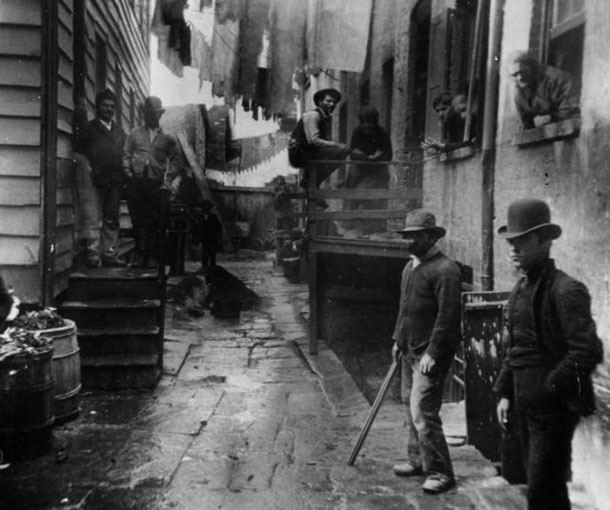
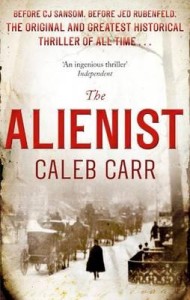
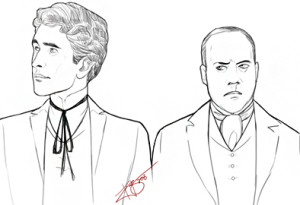
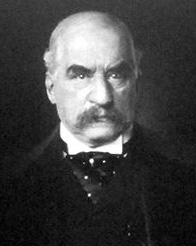
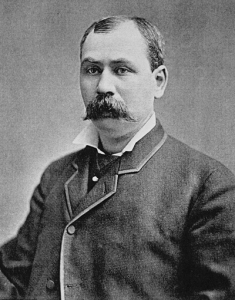
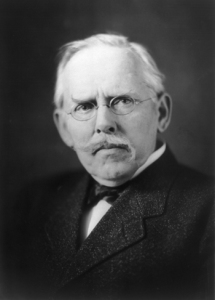
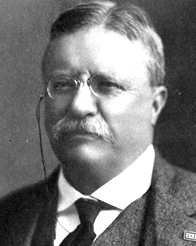


The depictions of the budding field of forensic science and turn of the century New York are fascinating. Carr is a first rate novelist and historian.
Unquestionably, on both counts.
I find it very frustrating that people frequently only view the Alienist books as thrillers; something for “them what likes to get a little scare out of their evening read,” as Stevie put it in The Angel of Darkness. Yes, they meet that criteria, but they’re so much more than that. There’s the fascinating historical aspects of the books, as you stated, but there’s also the exploration of important, complex themes that I wish more people had the courage to address. It does the books and their author a disservice to only view the books in a one-dimensional light.
And for anyone who may be wondering, Part Two is coming soon. I’ve been delayed because I’ve been swamped with work this month, and I want to ensure that I do the book justice by not rushing any part of the blog series.
I’ve noticed different covers for the Alienist. Was an anniversary edition produced this year?
Thank you for all of your work on this site. I just found it a few weeks ago when I was searching to see if there is a new Caleb Carr novel.
Apologies for the delay with my reply, but thank you for the kind words regarding the site. Unfortunately, I don’t believe an anniversary edition was produced this year. There are, however, a number of different covers/editions available. The editions I’ve used for the blog series so far are the 2011 UK paperback reissue (Part One) and the 2006 US trade paperback (Part Two). If you don’t have a recent edition already, I recommend the 2006 US trade paperback; it contains a new (and very entertaining!) afterword by the author that is well worth the read.
Just found this in doing background for my book club meeting coming up at the end of Jan & find it very helpful in expanding the story. When I retread it for my meeting, realized the murders were more grizzly than i remembered because the atmosphere of time & place was so fascinating that That was what struck me after first reading.
I know what you mean about re-reads feeling different to a first reading. Unfortunately, I can’t remember much about my first impression of The Alienist beyond being impressed at the historical accuracy. I do remember wondering if Dr. Kreizler was a real person, though! I thought he was a wonderful character (and I still do).
I’m glad you found Part One of the blog series helpful. Part Two is now up, and Part Three should be up soon. I hope you find them helpful for your book club meeting as well.